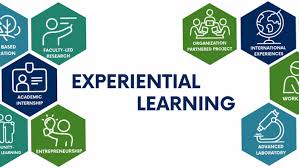Author – Sharika Jaiswal -Joint Secretary of Early Childhood Association and Kindergarten teacher at Sunbeam School, Varuna.
Education plays a key role in the development of human civilization. Ancient Indian education was based on the Gurukul education system. Those days teachers were addressed as “Gurus” and students as “Shishya”. The motto of teaching was to make students independent and secure. Before pandemic, Indian Education (School, college and institution) were quite acquainted with the traditional ways of learning in which education was imparted within the wall of classroom to a group of students.Teachers followed traditional set up of face to face lectures and learning tools were blackboards, chalks, books, pens and digi-board. In 2020-21 the education system had changed dramatically, with the distinctive rise of e-learning, whereby teaching is undertaken mostly on digital platforms. Online teaching became the need in this pandemic situation. The shift to online teaching was quite difficult. Learning how to teach an online class required restructuring course components using pedagogical approaches, learning activities and tech tools was new to the educators.The online teaching learning had many challenges. First was neophobia, fear of learning new things closely followed by technophobia. They mostly faced challenges like lack of IT support, continuous technological changes, unoptimized software for mobile devices and security issues. Teachers are complex humans in the sense that while they are creatures of habit, they also enjoy challenges and adventure.
In the post covid era technology was at teachers’ fingertips. But the lack of social emotional connectivity was the major concern. Due to the coronavirus pandemic students started experiencing high levels of stress as schools were closed and virtual classes were going on. They were separated from friends and stuck at home.They were missing peer learning and collaborative learning. Research shows that positive teacher-student relationships improve student learning – especially during stressful times. Best solution to this problem was to schedule regular check-ins with the students through giving phone calls.
Collaborative engagement motivates learning and promotes a deeper and more critically aware approach to the subject matter. Unfortunately one of the challenges of online education is that collaboration is difficult to achieve when students are not physically present together. Best solution to this problem is to provide them hybrid learning environments, where educators are able to teach in – person and as remote learners. One of the main benefits of hybrid learning is that it improves the level of flexibility. This kind of flexibility has become extremely important within the education sector to improve learning interest and better collaborative learning opportunities. Another major advantage of hybrid learning is its ability to improve how teaching resources are used and this can be seen in a number of different ways. In the post covid ere when students are ready to come to school and WHO is talking about social distancing, in that condition the mix of physical classroom learning and remote learning will allow smaller classrooms to cater for more students, while saving the very largest rooms for lessons that really need them. Additionally, the creation of learning materials for a course can be made streamlined, because teachers will no longer be required to create one set of learning materials for each learning style. Furthermore, hybrid learning can encourage some of the most hesitant teachers to fully embrace digital whiteboarding and other Ed Tech tools. Lastly, one of the most overlooked benefits of hybrid learning is the potential to reduce cases of absence in school. This can occur because while people may feel too physically unwell or emotionally imbalanced to attend a classroom, they may still feel well enough to engage with the class through remote learning, meaning they no longer need to miss out entirely.
It is very obvious that technology is assisting students in their learning and it is playing a crucial role in the field of education. But, as of now, it does not have the power to replace teachers because human interaction cannot be replaced by computers and human skills cannot be taught by technology. The implementation of hybrid programmes can help solve the many existing inefficiencies of our existing education systems. Large classrooms can be more effective, engaging and provide differentiation. Further, teachers can take advantage of the flexibility and convenience that the use of technology provides and finally, learning can be made more accessible.
Although hybrid programs require an investment in technology, in the long run, and with effective capacity building, It can truly help us transform our classrooms.



